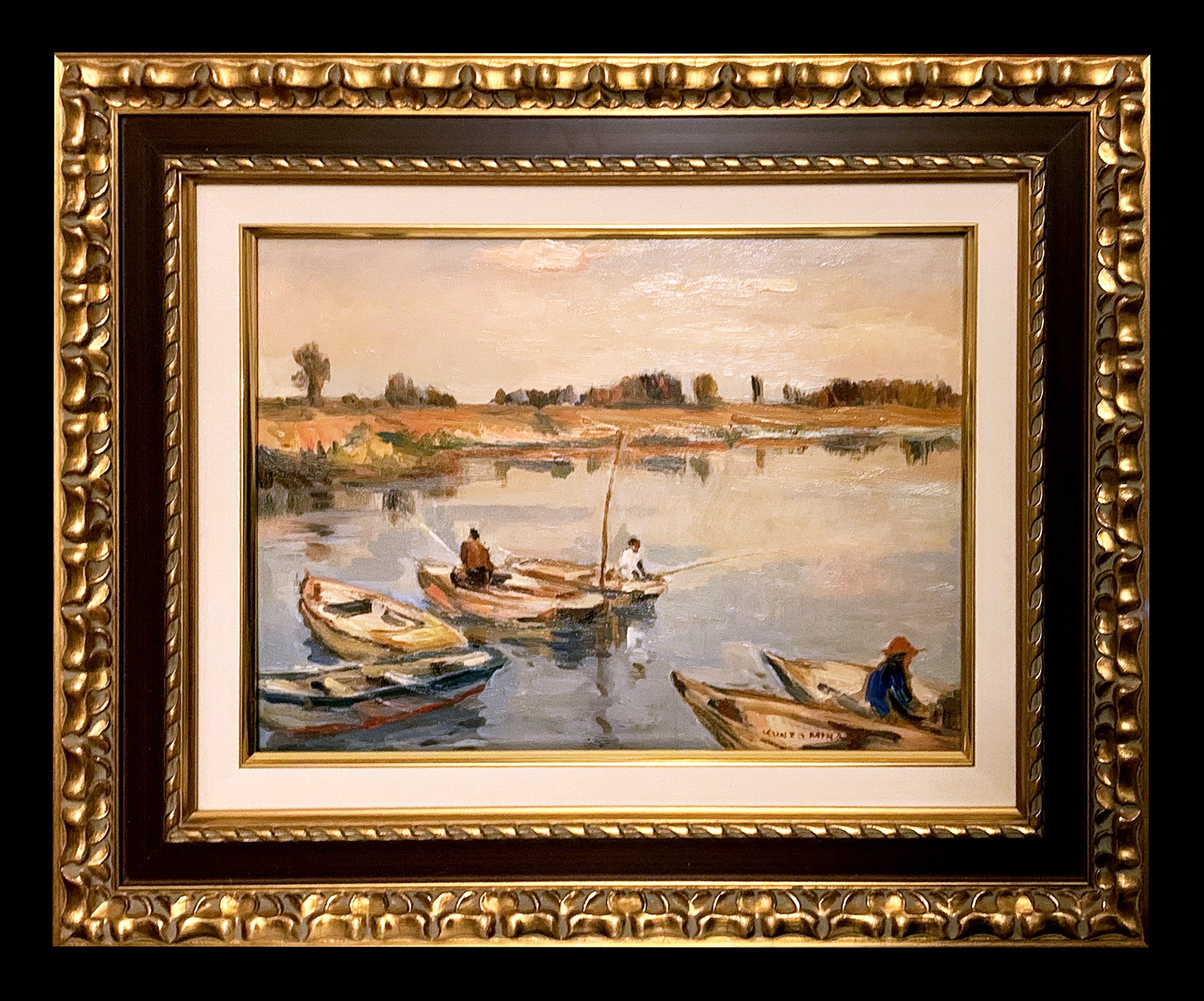 Image 1 of
Image 1 of

<b>FISHERMAN</b> / Kunzo MinamiCirca late 1930s to early 1940<b>SOLD</b></em>
Fisherman
Kunzo Minami (1883-1950)
MEDIUM: Oil on canvas
DATE: Circa late 1930s to early 1940
DIMENSIONS: 12-1/4 x 16-1/4” (canvas)
CONDITION: Excellent, no problems to note
SOLD
Contact us to purchase
Fisherman
Kunzo Minami (1883-1950)
MEDIUM: Oil on canvas
DATE: Circa late 1930s to early 1940
DIMENSIONS: 12-1/4 x 16-1/4” (canvas)
CONDITION: Excellent, no problems to note
SOLD
Contact us to purchase
Fisherman
Kunzo Minami (1883-1950)
MEDIUM: Oil on canvas
DATE: Circa late 1930s to early 1940
DIMENSIONS: 12-1/4 x 16-1/4” (canvas)
CONDITION: Excellent, no problems to note
SOLD
Contact us to purchase
Details
Minami Kunzō was born in Kure City, Hiroshima Prefecture near the Seto Inland Sea. He studied Western-style painting (yōga) from 1902 to 1907 with Okada Saburōsuke (1869-1939) at the Tokyo School of Fine Arts (Tokyo Bijutsu Gakkō) where a yōga department had been established in 1896. During this time, Minami mastered techniques of the Western Barbizon school featuring a realistic style of painting, and also became skilled at landscapes in the Impressionist manner.
Minami traveled to England in July 1907 to study British art. He viewed works by Joseph Mallard William Turner (1775-1851) and artists of the Pre-Raphaelite Brotherhood (founded 1848). In 1908, Minami was fortunate to be in London when three major events were held: the annual exhibition of the Royal Academy of Arts; the Franco-British Exhibition, and the Allied Artists’ Association London Salon. All told, Minami had access to more than 6,000 artworks by more than 1,000 artists, a goldmine of Western images and techniques that had an enormous impact on his artistic development. In 1909, Minami went to Paris for five months where he encountered the art of the Impressionists, Post-Impressionists, and Fauves. In these years, he also traveled to Italy, Germany, the Netherlands, Belgium, and the United States. As his art matured, Minami worked in more than one mode, producing both delicately visualized scenes and densely rendered landscapes.
After returning to Japan in 1910, Minami showed his works at the first “White Birch Society” (Shirakaba-ha) exhibition in July featuring Minami and the novelist/painter Arashima Mibuma (1882-1974). At this time, he began submitting artworks to the Bunten (Monbushō Bijutsu Tenrankai: Ministry of Education Fine Arts Exhibition), the official annual salon held in Tokyo from 1907 to 1918, where he was awarded second and third prizes in 1910, 1911, and 1912. In 1911, Minami was also given the first single-artist show of hanga ever held in Japan at the Rōkandō, Japan’s first modern-art gallery. It was during the 1910s that Minami’s small number of sōsaku hanga woodcuts became widely influential. In an article published by the Osaka Asahi Shinbun newspaper on November 16, 1913, Minami was quoted as saying: “My attitude [in making woodcuts] is not different from when I am painting. I am just using a knife instead of a brush, cherry wood instead of a palette.”
From 1932 until 1943, Minami was a Professor at the Tokyo School of Fine Arts (Tokyo Bijutsu Gakkō), his alma mater. In July 1944, he was honored as an “Imperial Household Artist” Teishitsu Gigei-in), an official appointment to create works of art for imperial residences. Minami remained very active until his death in January 1950. Long after his death, the Minami Kunzō Memorial Hall (Minami Kunzō Kinenkan) was established in 1985 within the Yasuura History and Folklore Museum (Yasuura Rekishi Minzoku Shiryōkan) in Kure City.
Connoisseur's Note
Minami’s view of men fishing from small boats has all the hallmarks of his mature, later style. The brushwork is characterized by energetic, impasto applications of color. Water, land, and sky possess a measure of abstraction deriving from gestural wet brushstrokes and blending of many colors. The palette is distinctive, particularly in the middle distance where yellows, browns, greens, and blues describe the riverbank and row of trees laid out horizontally across the composition. The sky, with its pink clouds, is given a lighter touch, the thick impasto technique limited to two small areas left and right of center. The figures of the three fishermen are rendered with only a few stokes of colors, mere suggestions of forms that work surprisingly well. Graphic elements such as these would eventually develop into representational abstraction in his final years.
Written by John Fiorillo. See: https://www.viewingjapaneseprints.net/texts/sosaku_hanga/minami_kunzo.html



